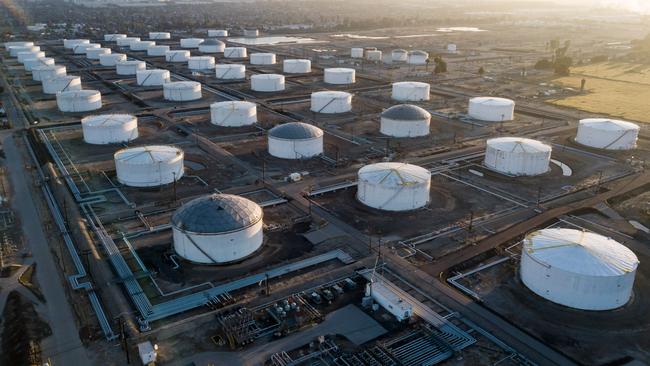Oil: A historic opportunity awaits
The absurd prices in the crude market can’t last much longer.

By way of example, when the dollar was trading above $US1.05 and the RBA announced it was uncompetitive, and that they would do something about it, it was silly not to move Australian dollars into US dollar-denominated bank accounts.
I’d add the wheat price crash in 2000 and the world food price crisis, which peaked in April 2008, as well as the iron ore peak in 2011 to the list of market moves based on fundamentals that were unsustainable.
An oil price war (brought about by oversupplying the commodity) between OPEC and non-OPEC producers, followed by the coronavirus pandemic, has produced a historic oil supply glut so great that land-based storage facilities are at capacity and oil is now being stored offshore on tankers carving figure eights in the ocean.
Consequently, WTI crude futures prices recently fell into deep negative territory. The circumstances are unusual and unprecedented, but oil is the most efficient rebalancing commodity given natural decline curves and finite reserves.
In case you missed it, a couple of weeks ago WTI crude futures fell $US55.90, to minus $US37.63 a barrel. It was the largest price drop in history and it was also the first time the commodity had traded below zero.

The short-term market inefficiencies that caused the collapse, in hindsight, were straightforward but they weren’t predicted by many, if any. The COVID-19 pandemic, and the restrictions on economic activity, has caused a global collapse in demand for oil. At the same time, oil-producing nations refused to cut supply.
Meanwhile, oil futures buyers must take delivery of physical oil if they hold the contract at expiry. The US Oil Fund (USO), the largest crude oil ETF by assets and volume, is estimated to have held about 25 per cent of outstanding May-expiry contracts. But the ETF has no storage facilities and has no interest in taking delivery of oil. Given that just about all crude processing and storage facilities were already up to their eyeballs in oil, the only avenue for the USO to rid itself of the obligation to take physical delivery was to pay buyers to take it off their hands. In other words, negative oil futures prices at expiry.
That negative prices are unsustainable — oil would cease being produced if producers had to pay customers to use it — is obvious and so it is reasonable to believe oil might have hit a historic and unrepeated low and the significant upside might be available to those who can position themselves, long term, for a recovery.
Low prices might finally force all oil-producing nations to take radical steps to ease the supply glut. And there are already tentative signs this is occurring.
The Organisation of the Petroleum Exporting Countries and other large oil producers led by Russia, known as OPEC-plus, have agreed to cut their combined output by 9.7 million barrels per day in May and June, while some OPEC producers are talking of starting cuts earlier.
Russia’s energy minister has asked for cuts of 20 per cent from domestic producers, Saudi Arabia’s Aramco will cut production by 30 per cent to 8.5 million barrels per day and, with $US200bn ($306bn) of North American oil-and-gas debt maturing over the next four years, an escalation in bankruptcies across the US shale sector could further cut production.
So how does an investor take advantage of a recovery from record low oil prices?
The first stop might be listed international oil producers like Exxon Mobil that can leverage their scale and diversified resources to turn a profit at much lower costs than smaller, high-cost-base producers.
Oil ETFs listed in the US and Australia are another avenue for investors to investigate, but investors need to be aware that for technical reasons they have historically only captured between a third and a half of the major moves higher.
Of course, there are also Aussie players, which include Woodside, Santos, Oil Search, Origin Energy and Beach Petroleum. However, our research results in some hesitation here. The underlying asset quality is relatively poor — generally tier 2 and tier 3 assets with less flexibility on the reinvestment required to maintain production.
Also, most Australian oil companies have cash break-even points (pre growth-capex) of about $US30 a barrel, and most of these businesses are struggling to break even. Woodside is the exception with a cash break-even estimated at $US15-$US20 a barrel.
With little doubt negative prices are historic, the only question may be the time frame required before a positive return is realised.
Roger Montgomery is founder and chief investment officer of the Montgomery Fund.







After 30 years of investing I have learned that three or four times each decade a market reaches a historic level, either high or low, due to unprecedented fundamentals that investors shouldn’t ignore.